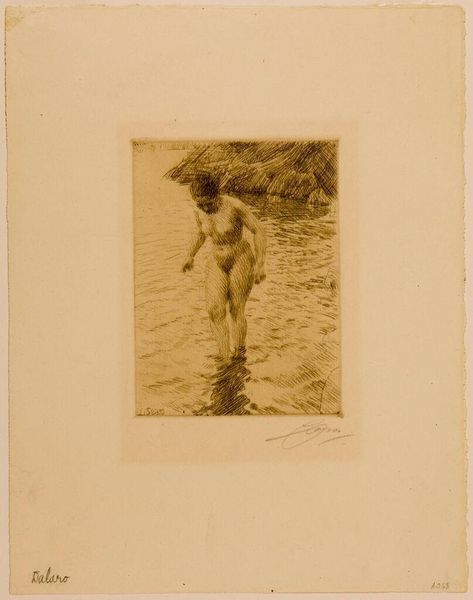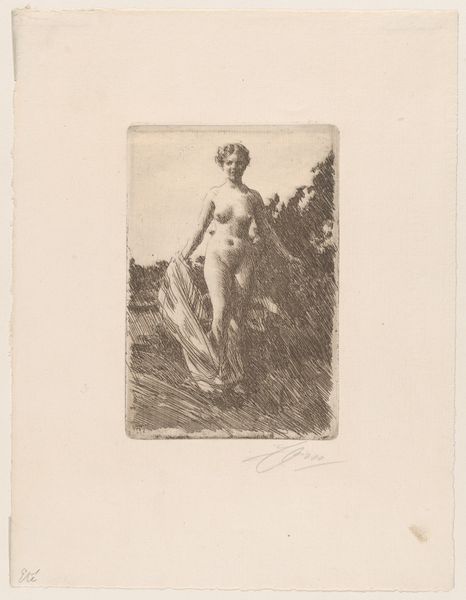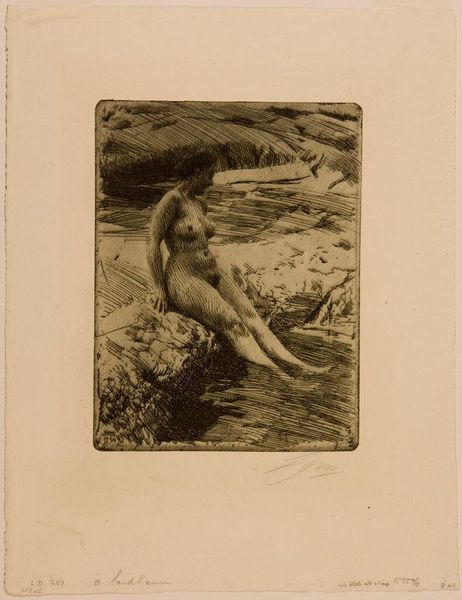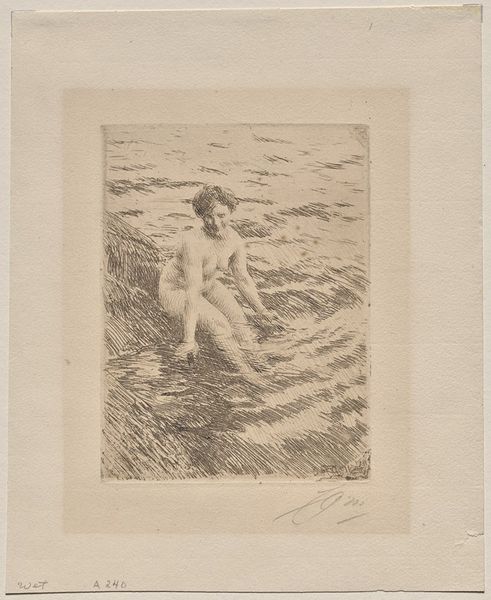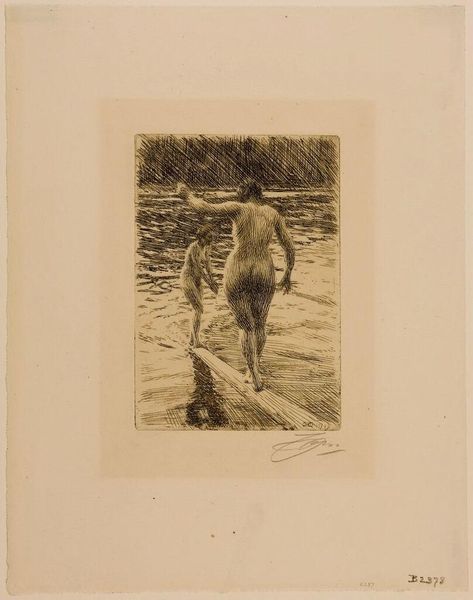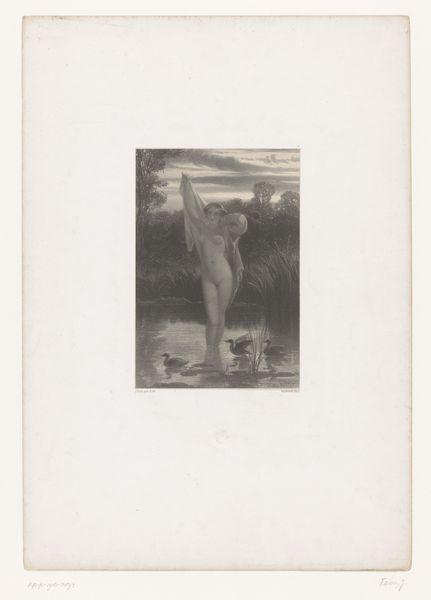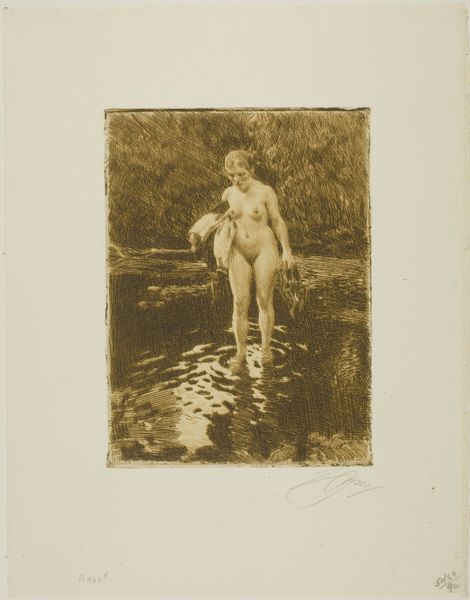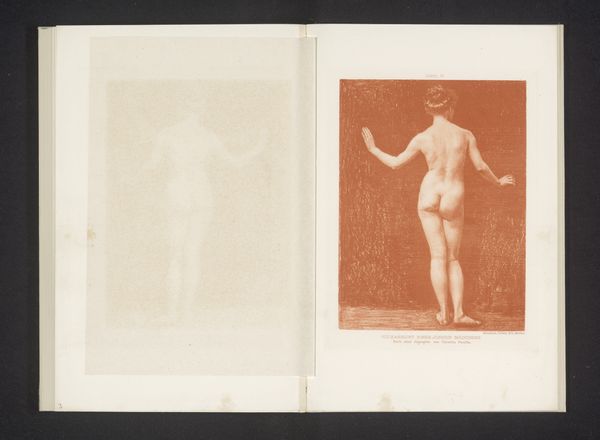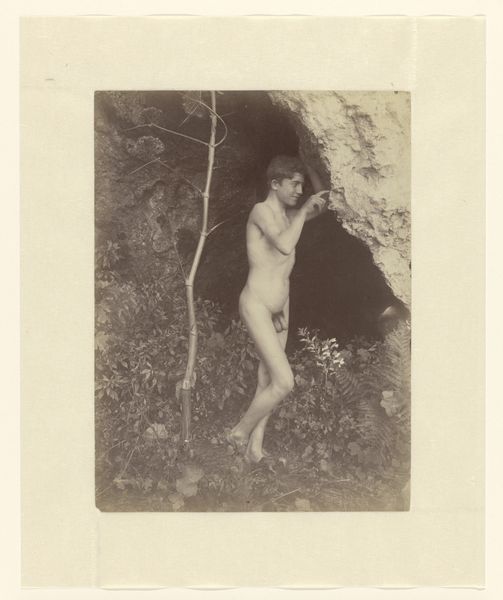
drawing, print, etching
#
drawing
# print
#
etching
#
landscape
#
figuration
#
female-nude
#
genre-painting
#
realism
Dimensions: Plate: 6 1/4 × 4 11/16 in. (15.8 × 11.9 cm) Sheet: 12 3/4 × 10 1/16 in. (32.4 × 25.5 cm)
Copyright: Public Domain
Curator: Today we’re looking at Anders Zorn’s "Dalarö," an etching from 1915 currently held at The Metropolitan Museum of Art. What's your first impression? Editor: Austere. The stark blacks and whites lend a somber mood despite the rather idyllic scene. It feels immediate and unfiltered. Curator: It's intriguing how Zorn presents the female nude figure here, fully immersed in a natural setting. Considering its time, what social narratives do you think he engages with, if any? Editor: I agree it is engaging. There’s an undeniable sensuality, sure, but it's not the overblown kind so common in his era. The interplay of light on the water and her form – that contrast– does more to engage the senses than any pretense of 'classical beauty.' Look at the almost scientific detailing in how the water distorts her legs. Semiotically, it’s like a challenge, like saying, “what you see isn't always what it seems.” Curator: The setting on Dalarö island, near Stockholm, moves us from typical studios. One wonders about class, privilege, and Zorn's male gaze depicting Swedish women, reflecting norms or subtly resisting them. It fits a wider narrative of the turn of the century artistic reckoning in which Realism confronts conventional tropes regarding the female body. Editor: That location gives the print everything, in my opinion. Even the texture created through the etching technique has so much to offer, providing the visual stimuli. It allows for those reflections on class and society. Remove those two key aspects and then its merely about the gaze or simply making comment through political theory. Curator: Right, the choice of Dalarö is paramount, creating the social and historical framework. These figures aren't goddesses or mythical beings. Instead, they exist in a grounded setting that blurs boundaries of societal commentary, even possibly suggesting liberation. It can be read both ways. Editor: It’s as if, despite its small size and monochromatic nature, the etching contains layers upon layers. Zorn allows for interpretation with that dynamic composition. A truly subtle moment from 1915. Curator: Exactly. There’s a fascinating discourse here, indeed, about place, gender, and representation rendered skillfully by Zorn. Editor: The longer we look, the more there is to see within his choice of setting.
Comments
No comments
Be the first to comment and join the conversation on the ultimate creative platform.
